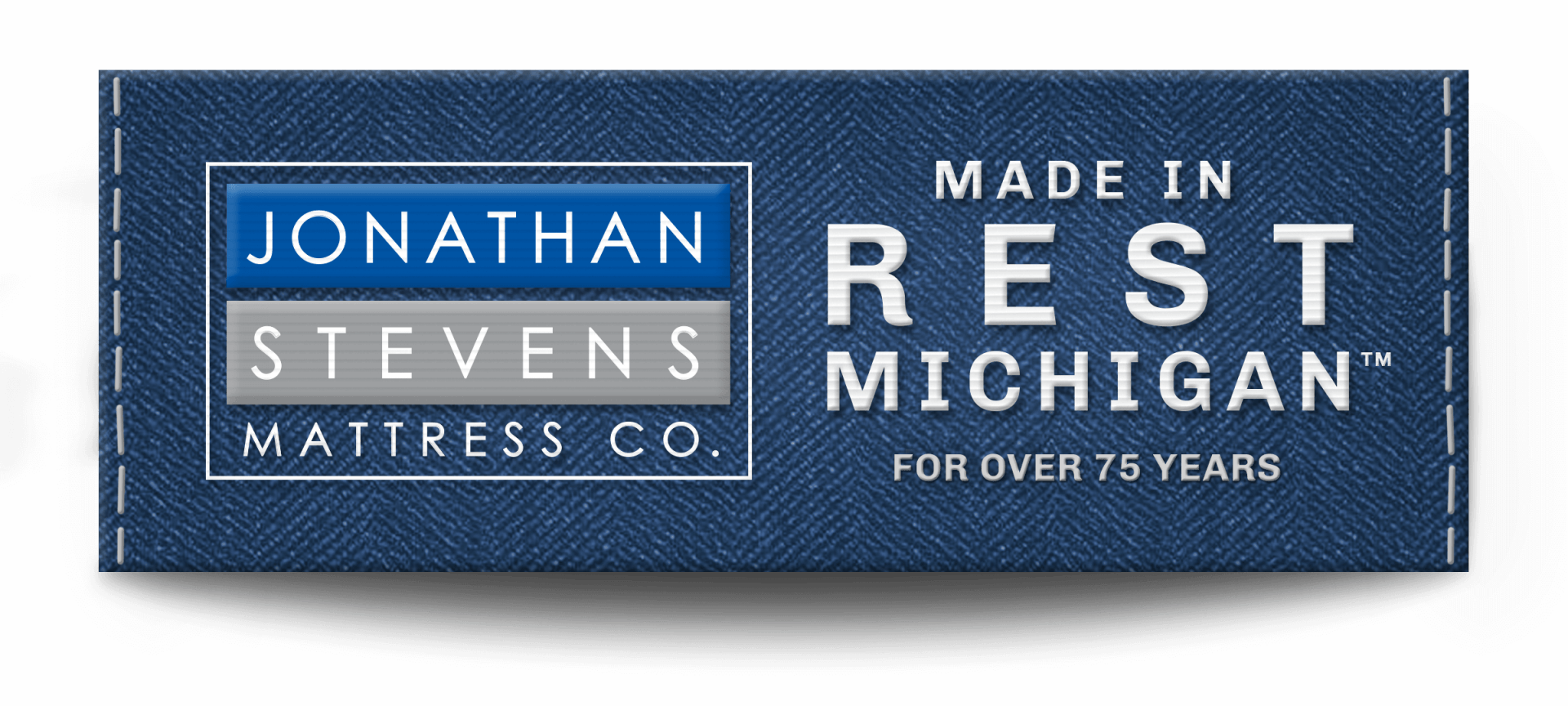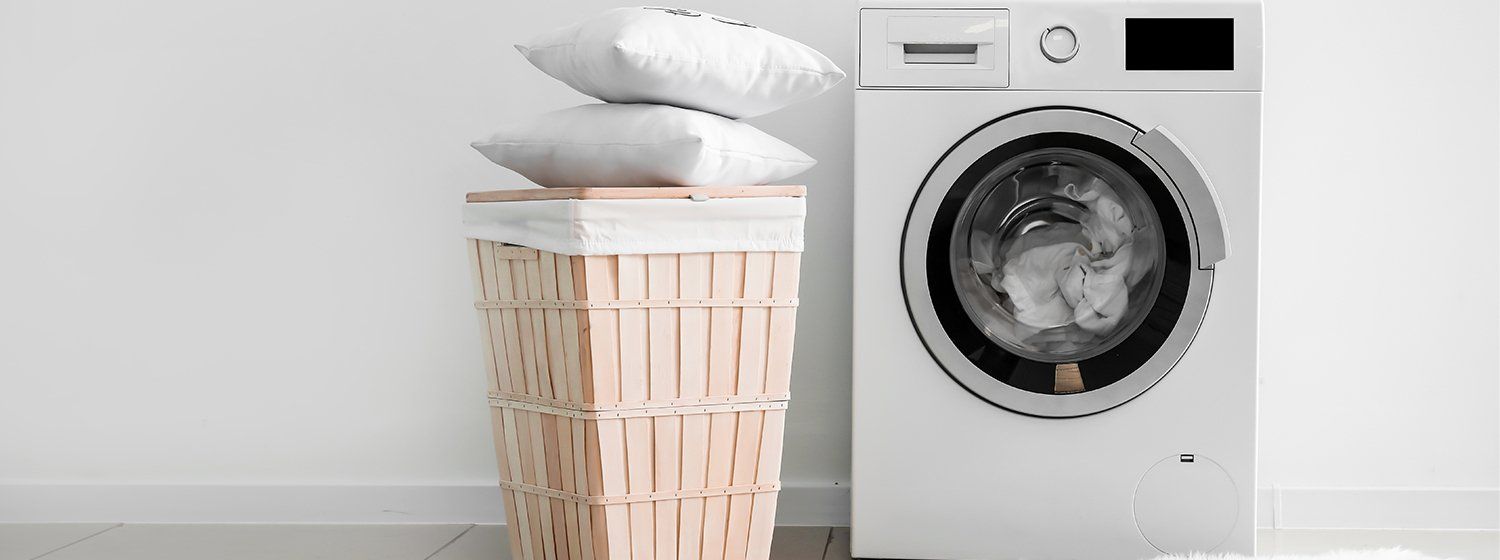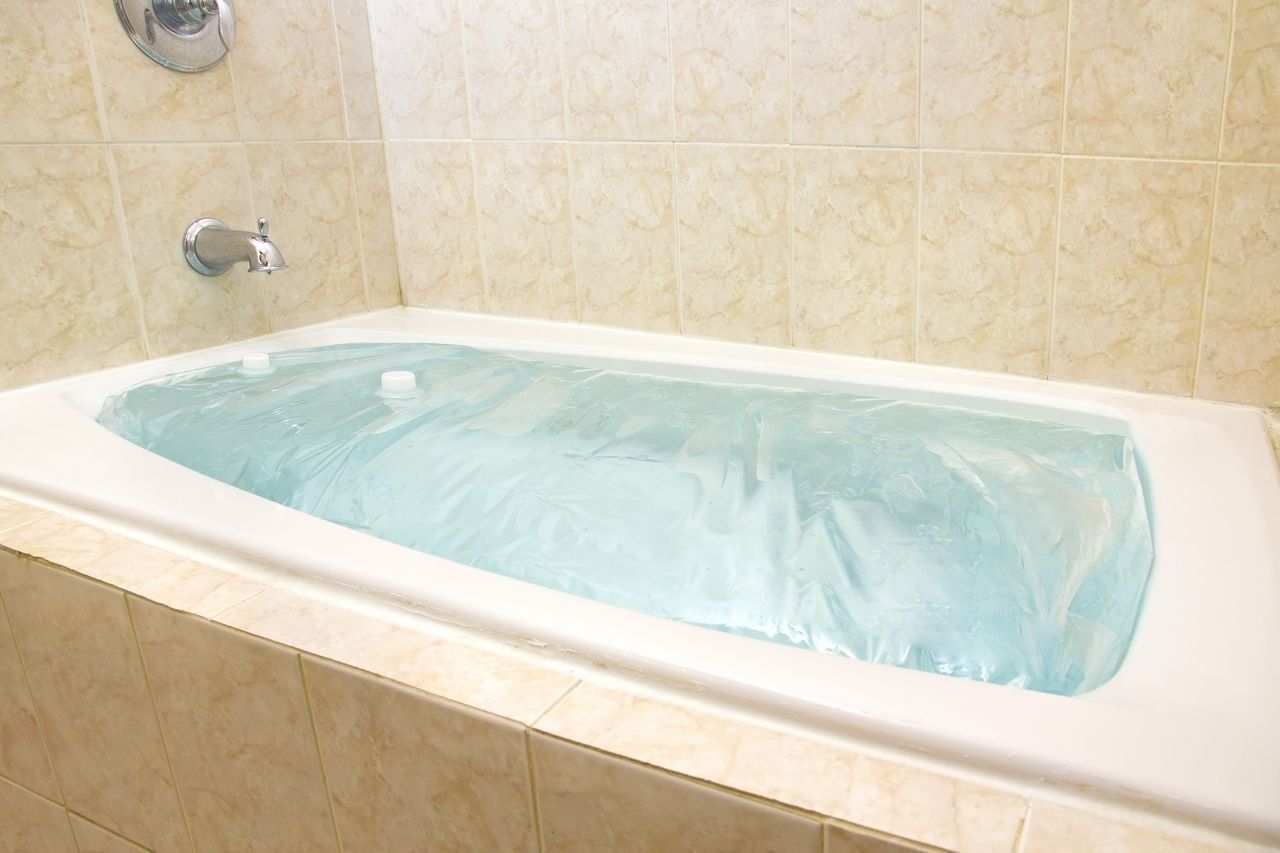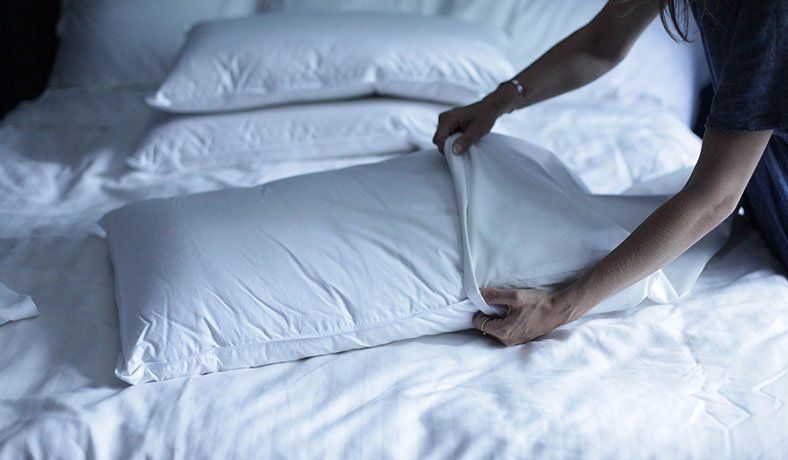How to Wash Pillows
Don't ignore your pillow
Making sure your pillow is germ-free is essential to good sleep hygiene. If your pillow smells, then forget about a good night's rest. In fact, washing your pillows should be done alongside mattress care. You wouldn't want to sleep on a stained pillow, would you? No one would! How about a smelly pillow? If a pillow is neglected for months at a time, the odor will make itself known. A new pillow sheet might deter it for a bit, but it'll surface again.
In this article, we'll talk about the following:
- How often should you wash pillows?
- What happens if you don't wash your pillows
- How to wash your pillows
- How to start taking care of your pillows
How often should you wash pillows?
If you have smelly pillows riddled with stains, then its time to replace those pillows. A pillow should be washed 2 to 4 times a year. If you're not convinced, know that your head and face touch that pillow every night. Whatever you bring outside will find a new home in the fabric of your favorite pillow.
What happens if you don't wash your pillows?
If left unwashed, you'll be the host of a microscopic slumber party. Most of your "guests" are dust mites, who love to snack on dead skin cells. Other guests are dust particles, pet dander, and other allergens from the environment.
Sweat, hair, dandruff, and makeup will also accumulate on your pillow. Not to mention you drool on your pillow from time to time. Both cover and pillow need to be washed frequently, with the sheet more often than the pillow itself. If you wash your pillows regularly, they will last longer.
How to wash your pillows
Not all pillows are made the same, so follow their instructions as indicated by their tag/label.
Washing Machine
Cotton, feather, down, and fiber pillows can be washed in a machine. Before placing them in the washer, you can pre-treat them for those tough-to-remove stains using a bleach solution. It's recommended to wash two pillows at a time to balance the load. If you only have one pillow, wash with towels. A washer agitator (the middle spindle) might increase the wear of your pillows, so if you have one, set it to low spin or gentle cycle. Don't wash your pillows with their cases or protectors, your pillows will not wash adequately.
Use warm water and mild detergent for your pillows. Once they're done, you can either air dry them, or stick them in the dryer. Both options are equally fine. If you have a spin dry feature, use it to get that extra moisture out of your pillow. Dry your pillows on the lowest possible setting. Decreased agitation will maintain the durability of your pillows, especially cotton and feather pillows. You can speed-up the drying process by placing a towel inside to absorb the water.
While in the dryer, you can use tennis balls to fluff your pillows, too. Tennis balls will prevent clumping as they bounce around and hit the pillows inside. This method isn't necessary, however, as you can fluff your pillows by hand. Placing tennis balls into socks will prevent the colored dye from getting on your pillows. If you don't have tennis balls, or prefer another "fluffing method", tying old (but clean) shirts into a knot is a good substitute.
Hand Washing
If you prefer a more delicate approach to your pillow hygiene, then hand washing is your best alternative. The process will be longer, however, but if done right, the outcome will be the same as if you did machine wash them.
Fill a clean bathtub with warm water, about half-way is good. Mix some mild laundry detergent into the water, but be careful not to use too much since pillows are very absorbent. Without a dryer, it will be difficult to remove excess soap when done by hand. Soak your pillows in the solution for a couple hours, occasionally squeezing them so they soak in the detergent and water. Don't soak them with their covers.
Once you feel satisfied with your cleaning, drain the tub completely and thoroughly rinse the pillows with water. Use a shower nozzle if you have one, especially one that's detachable. Since pillows are super absorbent, carefully squeeze them to get all that water and soap out. Hang dry them or lay them flat on a clean surface so they dry completely. Drying them when its hot and windy is a plus, since they get maximum sun and air to breath.
Foam Pillows
These types of pillows are unique, so they require extra attention on your part. Avoid washing your foam pillows in the washer altogether. The heat will disintegrate the material and the washer will destroy the padding and foam itself. Instead, foam pillows need to be cleaned by hand. If the pillow has a covering, remove it and wash it separately in the washer. For the pillow itself, air dry it and vacuum it regularly to keep it fresh. For an in depth guide to cleaning your foam pillow, refer to Bed Pillows for a step-by-step process.
Daily care for your pillows
Pillows need to breath, much like mattresses, so hanging them outside on a breezy day will have them smelling fresh again. For those pesky odors, lay your pillow flat on a clean surface and lightly sprinkle baking soda on one side. You'll have to do one side at a time for a few hours, but it'll be worth it. Once done, simply vacuum the sides of the pillow and you're done!
For small cleanings, spot cleaning a pillow is almost the same for a mattress. Dab stains with laundry detergent and rinse with copious amounts of water. Pillows will take a while to dry, so hang them in direct sunlight with adequate air flow. Heat from the sun is known to be a natural disinfectant, so it'll help in getting rid of harmful bacteria in the process.
Never sleep with a "naked" pillow either. A pillow with a protective covering will not only maintain its durability, but will keep the material safe from debris that would normally stick to the covering. A pillow without a protective covering will allow dead skin cells, dirt, dust, and allergens to seep into the material. This will make it harder to clean and the smell will be unbearable. Stains will be tougher to get rid of, too, without that protective barrier of a pillow sheet.
Start taking care of your pillows!
Remember, always read your pillow label/tag before you wash your pillows. Most pillow types can be washed and dried in a machine, but take special care with foam pillows. They need to be washed by hand. If you prefer an alternative method to cleaning your pillows, hand washing them is a great option. The process will take longer, however, but if done right, the results can be the same as machine washing them. Keep your pillows fresh by airing them outside. Baking soda will get rid of odors and heat from the sun will naturally disinfect your pillows of bacteria. Finally, sleep with a pillow sheet! Don't sleep with a bare pillow, otherwise cleaning it will be difficult. If you follow our advice, your pillow will love you for it.
All Rights Reserved | Jonathan Stevens Mattress Co.




